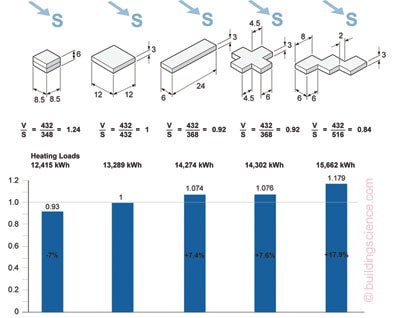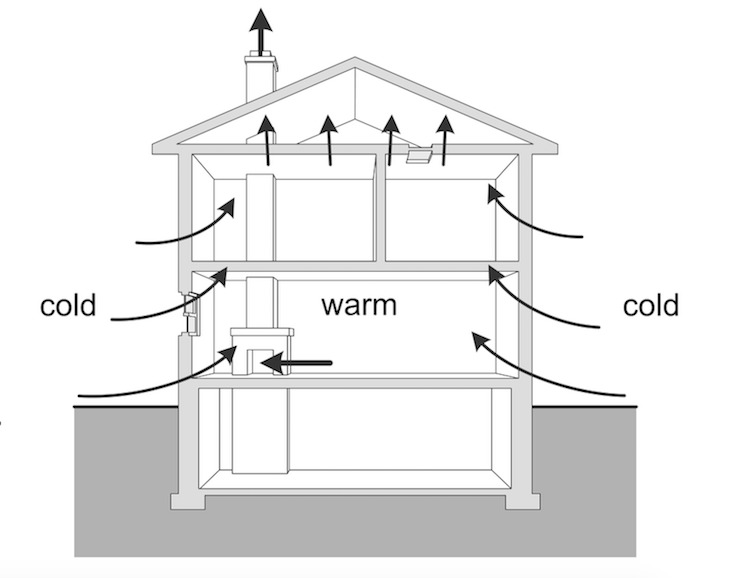Quote:
Originally Posted by SFBruin

Would shrinking the average square footage of a US home result in energy savings?
|
Yes and no.
- Yes because there is less interior volume to heat & cool.
- No because smaller houses = larger building envelope area. Energy flows out of a building through its roof, walls, and below ground-level sections. By increasing more single family housing, you also increase the per-capita building envelope area.
- But also yes if you house more people in larger apartment buildings and attached housing (apartment buildings preferred).

Here is an article on Building Science about the topic, where the picture above is from, if anyone is interested:
https://www.buildingscience.com/docu...ape-and-energy
Quote:
Originally Posted by Pedestrian

Sure but better design could save even more. Roofs are a good example.
|
Reflective roofing will for-sure help with reducing cooling energy usage. But it only effects climates where cooling predominates (hot and warm-temperate climates).
The better solution is increasing the insulation levels in roofing, preferably to R50+ (imperial units) while also thoroughly air-sealing the entire building envelope. This will help in both hot and cold climates.
For cold climates, heat mostly escapes through the roof rather than the side walls. This is not just because "hot air rises, and cool air sinks". It is also due to the stack effect, in which incoming cool air pushes warmer up, where it escapes through the attic roof and chimney:

Quote:
Originally Posted by Camelback

I've always been told to not mess with the thermostat too much because keeping it set at a predetermined temperature around the clock is more cost efficient than off/on, off/on, off/on.
I think the thought is that the energy required to cool a warm house by 10 degrees is more than to cool it by 1 degree 10x/day?
|
The best way to think about it is this:
1. Temperature and heat transfer is mostly a linear relationship that depends on the difference in temperature between indoors and outdoors. Therefore, the difference in temperature in cold climates (70F - 20/30F = 40/50F) tends to be greater than the difference in temperature in hot climates (90-100 F - 70F = 20-30F). So it takes more energy to heat a cold building in the winter than to cool a hot building in the summer.
2. Not all HVAC methods are equal in terms of energy usage.
- Heating typically comes from boilers and furnaces using gas or oil. In some cases, it can come from resistance heating. In other cases, it comes from heat pumps.
- Cooling only comes from A/Cs utilizing the refrigeration cycle.
In terms of energy efficiency, here is a breakdown:
- gas or oil boilers: 70-95% efficient
- resistance heating: 100% efficient
- heat pumps or A/Cs: 200-400+% efficient
As you can see, heat pumps or A/Cs (both utilize the super-efficient refrigeration cycle) are far, far more efficient than other methods of heating. That's why most energy efficiency experts are pushing for electrification of HVAC in the near and far future.



